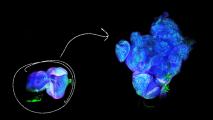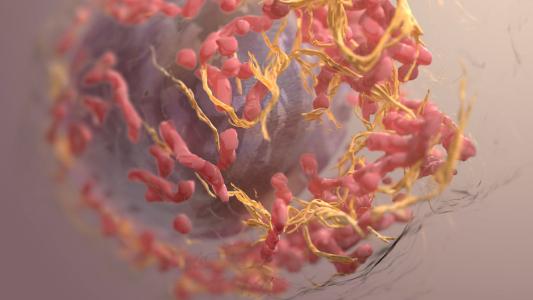We don’t have neurons only in the brain but all around the body. For example, sensory neurons that detect pain reach every organ in the body. Special proteins in these neurons activate when faced with a harmful stimulus and ignite the “it’s hurting” signal, which travels down the neuronal axon from the point of the stimulus to the spinal cord.
After a few connections with spinal cord neurons, the signal ascends to the brain, and that’s when we sense the “ouch” feeling.
When sensory neurons — or any neuron in the pain network just described — are damaged, you can develop what’s called neuropathic pain, a constant pain sensation without the need of a stimulus to trigger it.
There are very limited options to treat this kind of pain, which in many cases becomes chronic.
But now a group of scientists has described how to treat neuropathic pain in mice using gene therapy.
What happens to neurons in neuropathic pain?
Some spinal cord neurons suffer a change of character in neuropathic pain: they switch from producing a molecule called GABA to a molecule called glutamate. GABA and glutamate play the exactly opposite roles in the neurons; while GABA is an inhibitor (calming neurons), glutamate is a neuronal exciter (causing them to fire more easily).
Neuropathic pain is a constant pain sensation without the need of a stimulus to trigger it.
This critical shift in molecule production in the spinal cord could be one of the causes of neuropathic pain development.
The work recently published in the journal Molecular Therapy showed how to solve the GABA/glutamate problem and alleviate pain in mice. The research group inserted two genes to the spinal cord of mice to help their neurons produce GABA again — and found that the pain disappeared.
How does gene therapy work?
The technique of inserting genes into cells is called “gene therapy.” The genes are typically carried on a viral vector that transports and inserts the gene, since naked DNA will be destroyed in the body before arriving at its target cell. Viral vectors are viruses modified in the lab to carry only certain genes into cells.
The gene therapy boosted the creation and release of GABA in mice and appeared to relieve their pain.
It may sound like science fiction, but there are already two gene therapies approved by the FDA to treat diseases in humans, and many others are being studied in clinical trials.
For any therapy to be approved for human use, first preclinical studies have to be done in animals. In this case, scientists showed this therapy works in mice: they introduced into the mice’s spinal cord two genes that boost the creation and release of GABA, which appeared to relieve their pain in subsequent tests.
How do we translate these results into human therapies?
The goal of this research is to develop a therapy that could cure neuropathic pain in humans.
“One of the prerequisites of a clinically acceptable antinociceptive (pain-blocking) therapy is minimal or no side effects like muscle weakness, general sedation or development of tolerance for the treatment,” said senior author Martin Marsala, MD, professor in the Department of Anesthesiology in the UC San Diego School of Medicine.
The gene therapy didn’t produce any remarkable or measurable side effects in pigs and macaques.
To get a step closer to human application, scientists used a human spinal cord injection device to inject the genes to pigs and macaques, whose spinal cord sizes are closer to humans’. They tested the safety of the procedure, as well as the dose needed to target the affected area and, at the same time, avoid side effects.
The group showed that pigs and macaques injected with viruses carrying the genes that help produce GABA in the spinal cord didn’t show any remarkable or measurable side effects related to the procedure.
This promising work in mice, pigs, and macaques lends hope for finding a safe, permanent, and non-addictive treatment for neuropathic pain in humans.
We’d love to hear from you! If you have a comment about this article or if you have a tip for a future Freethink story, please email us at [email protected].






